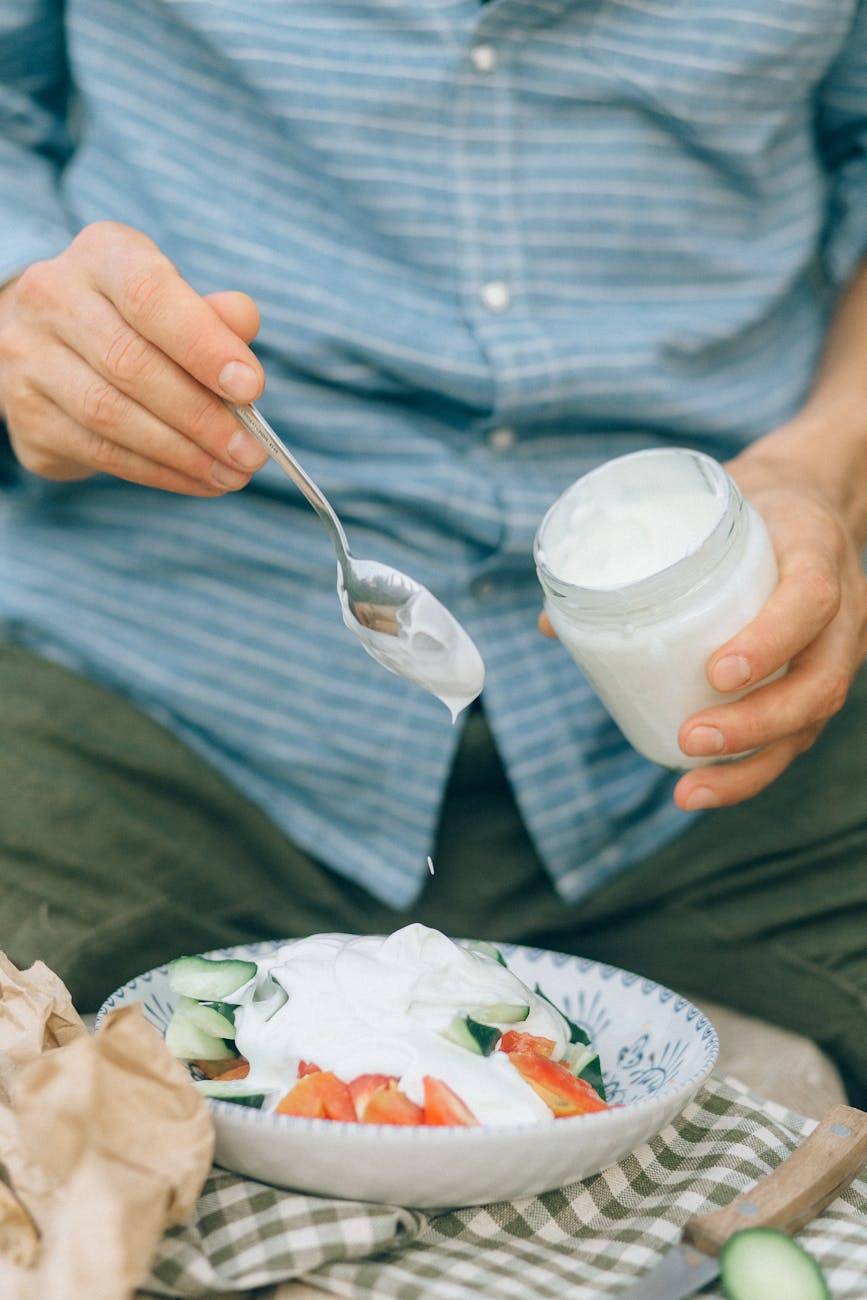Understanding Organic Raw Milk
Embarking on the journey to locate the best organic raw milk near you begins with understanding what organic raw milk truly is and acknowledging the benefits and risks associated with it.
Defining Organic Raw Milk
Organic raw milk refers to milk that comes from cows raised on organic pastures without the use of antibiotics or artificial hormones. The cows are allowed access to pastures and are raised following stringent rules and regulations. This ensures the milk they produce is free from synthetic hormones and antibiotics, contributing to the natural and organic label (The Star).
However, it’s important to note that while the farming practices may differ, the nutritional content, levels of pesticides and metals, synthetic vitamin D, and heart-healthy fats in organic milk are no different than conventional milk (The Star).
Benefits and Risks
Consuming organic raw milk comes with a set of potential benefits and risks. On the positive side, raw milk contains beneficial bacteria and enzymes that could contribute to a healthier gut microbiome and improve digestion. There are also suggestions that drinking raw milk can be linked to a reduced risk of allergies, asthma, and eczema, especially among children.
However, these benefits come with potential risks that should not be overlooked. Raw milk can also contain harmful bacteria like Salmonella, E. coli, and Listeria, which can pose significant health risks.
Moreover, it’s crucial to be aware of the legal restrictions surrounding the sale and consumption of raw milk. In some countries and many states in the United States, the sale of raw milk is prohibited due to food safety concerns.
In conclusion, while organic raw milk can be a nutritious addition to your diet, it’s important to weigh the potential benefits against the risks. Always ensure the milk is sourced from reputable providers who adhere to strict hygiene and safety standards. If you’re interested in finding organic raw milk near you, check out our raw milk finder.
The Controversy Surrounding Raw Milk
Despite the growing popularity of organic raw milk, it is a subject of ongoing controversy due to health claims, misconceptions, and legal restrictions.
Health Claims and Misconceptions
On one side of the debate are the proponents of raw milk who argue that it contains beneficial bacteria and enzymes that contribute to a healthy gut microbiome and improve digestion. There have also been links between raw milk consumption and a reduced risk of allergies, asthma, and eczema, especially in children (Healthline).
However, critics argue that the nutritional content, synthetic vitamin D, levels of pesticides and metals, and heart-healthy fats in organic milk are no different than cheaper conventional milk. They also point out that Canadian law forbids antibiotics and added growth hormones in any kind of milk.
Contrary to popular belief, organic cows are allowed access to pasture and are raised without antibiotics or added growth hormones, but these differences do not affect the end product of organic milk.
Legal Restrictions and Regulations
The legal landscape surrounding the sale and distribution of raw milk varies greatly by country and region. In many areas, the sale of raw milk is heavily regulated or even banned due to potential health risks.
One of the major concerns is the presence of harmful bacteria like Salmonella, E. coli, and Listeria in raw milk. These bacteria can cause serious illness or even death, especially in individuals with weakened immune systems, the elderly, pregnant women, and children.
Despite these risks, supporters of raw milk argue that the benefits outweigh the potential dangers, especially when obtained from trusted sources and properly handled. They advocate for the right to choose what they consume and call for more lenient regulations.
Both organic and conventional farmers in Ontario are subject to thousands of rules and regulations that dictate everything from how clean hands must be when touching udders to the space cows need to live (The Star).
It’s important to be informed about the benefits and risks of consuming raw milk as well as the local regulations in your area. If you’re interested in finding organic raw milk near you, check out our raw milk finder.
Organic Raw Milk Production
If you’re interested in the journey of organic raw milk from the farm to your table, you’ll want to understand the farming practices and regulations involved in its production.
Organic Farming Practices
Organic raw milk comes from cows raised on organic pastures, which have not been treated with antibiotics or artificial hormones (Healthline). These cows are typically fed a diet of grass and hay, and are not exposed to synthetic pesticides (Revived Roots, Raw Farm USA).
Despite these differences in farming practices, research indicates that the nutritional content, synthetic vitamin D levels, levels of pesticides and metals, and heart-healthy fats in organic milk are no different from those in conventionally produced milk (The Star).
To improve the hygienic quality of their products, organic milk producers are often provided with consultancy and training in Good Hygienic Practices (source).
Regulations in Dairy Farming
Dairy farming, including the production of organic raw milk, is regulated by various federal government organizations. In Ontario, for instance, policies and programs developed by the Canadian Dairy Commission, in conjunction with provincial marketing boards and industry partners, oversee the industry.
Each dairy farm in Ontario undergoes audits every two years to assess performance in areas such as animal care and standard operating procedures. The proAction program is a prevalent scheme, ensuring dairy farmers follow strict requirements for milk quality, food safety, animal care, livestock traceability, biosecurity, and environmental conservation (source).
Moreover, all raw milk from dairy farms in Ontario is tested at the University of Guelph’s Laboratory Services Division to ensure it meets the strict Canadian standards.
Understanding these organic farming practices and regulations can help you make an informed decision about where to buy raw milk and appreciate the efforts taken to ensure the safe production of this nutrient-rich beverage.
Where to Buy Organic Raw Milk
When it comes to finding organic raw milk, there are a few options. However, it’s crucial to remember that the sale of raw milk is regulated differently in various states within the United States. Some states allow its sale in stores, while others restrict it to farm sales or prohibit its sale entirely. (Revived Roots)
Buying Raw Milk in Stores
Buying organic raw milk in stores can be a convenient option. However, due to the legal restrictions in some states, it may not be available on the shelves of your local grocery store. Before heading to the supermarket, check our raw milk finder to locate stores that carry organic raw milk in your area. Remember, the availability of organic raw milk in stores can vary, so it might be a good idea to call ahead to confirm.
It’s also worth mentioning that the nutritional content, synthetic vitamin D levels, levels of pesticides and metals, and heart-healthy fats in organic milk are no different than cheaper conventional milk. Canadian law forbids antibiotics and added growth hormones in any kind of milk.
Purchasing Directly from Farms
If you’re not able to locate organic raw milk in stores, consider purchasing it directly from a farm. Buying from a raw milk farm allows you to know exactly where your milk is coming from, and you can often speak directly with the farmers about their farming practices.
Keep in mind that both organic and conventional farmers are subject to thousands of rules and regulations that dictate everything from how clean hands must be when touching udders to the space cows need to live. So, you can rest assured knowing that your milk is being produced in a regulated environment.
Before making a trip to a local farm, use our raw milk farm near me tool to find farms in your area that sell organic raw milk. As with buying from a store, it’s recommended to call ahead to confirm availability and arrange for a suitable pickup time.
Whether you choose to buy in stores or directly from a farm, obtaining organic raw milk can be a rewarding experience. Not only do you get to enjoy the fresh, creamy taste of raw milk, but you also have the satisfaction of knowing you’re supporting local farmers and sustainable farming practices.
Safe Handling of Organic Raw Milk
The consumption of organic raw milk has been a topic of controversy due to the potential risks involved. While raw milk can contain beneficial probiotics, it can also contain harmful bacteria such as E. coli, salmonella, and listeria, which can cause serious illnesses (Raw Farm USA). Therefore, it’s crucial to handle raw milk safely to minimize these risks.
Minimizing Risks
Drinking raw milk carries a risk of bacterial contamination, including foodborne illnesses such as E. coli, Salmonella, and Listeria. However, proponents of raw milk argue that the risk can be mitigated by proper handling and sourcing from reputable farms (Revived Roots).
It’s important to note that raw milk does not cure lactose intolerance, is not more effective in preventing osteoporosis than pasteurized milk, and is not an immune system building food, particularly for children.
A crucial step in minimizing risks is ensuring that the raw milk you consume comes from a reputable source. The farm should engage in safe and sanitary milking practices, and the cows should be healthy and fed an organic diet. Utilizing our raw milk finder can help you locate reputable farms offering organic raw milk near you.
Proper Storage Techniques
The manner in which raw milk is stored can significantly impact its safety and quality. After purchasing raw milk, it should immediately be refrigerated at temperatures below 40°F to slow the growth of any potentially harmful bacteria.
The milk should be kept in a clean, sealed container to avoid cross-contamination from other foods. It’s also recommended to consume raw milk within its expiration date to ensure its safety and freshness. Proper storage techniques are crucial in reducing the risks associated with the consumption of raw milk.
While raw milk can be a delicious and nutritious addition to your diet, it’s important to understand and take precautions to minimize potential risks. Always remember that the key to safely enjoying raw milk lies in careful sourcing, proper handling, and correct storage practices. For more information on where to find organic raw milk near you, visit our where to buy raw milk page.
Global Trends in Organic Milk Production
In recent years, the organic milk industry has seen significant growth. An increased awareness of the health benefits and sustainable farming practices associated with organic products contributes to this global trend.
Growth of Organic Milk Industry
The popularity of organic milk has been steadily increasing, particularly in European countries, since the 1990s. Organic farming requires that animals are kept in the pasture, resulting in a more health-promoting product in terms of vitamins, fatty acids, whey proteins, and minerals. Nevertheless, the hygienic quality of raw milk from organic farms does raise concerns. Therefore, producers of organic milk should be supported with consulting and training in Good Hygienic Practices.
Organic milk production in the EU has been growing dynamically, with nearly 3.3% of all milk produced being organic. This figure reached 5.52 million tonnes in 2019 and continues to rise. The number of cows on organic farms and their productivity are also increasing, particularly in countries with large dairy cow populations and high milk yield.
Leading Producers of Organic Milk
The largest producers of organic milk in the EU in 2019 were Germany, France, Denmark, Austria, the United Kingdom, and Sweden. Although some countries with high or medium total milk production, such as Poland, Ireland, and Spain, have not seen significant growth in organic milk production.
In terms of dairy processing efficiency, Denmark, Lithuania, and Sweden top the list. These countries either have high milk production or low production and few dairies. Countries with the most certified organic dairies include Italy, France, the Netherlands, Spain, the Czech Republic, and the United Kingdom. However, in some countries, the number of certified dairies is not proportional to the rate of milk production, leading to a decrease in the performance of dairy plants.
While the organic milk industry continues to grow, locating a source of organic raw milk can be challenging due to varying regulations and availability. For guidance on where to find organic raw milk near you, visit our raw milk finder.




Leave a Reply